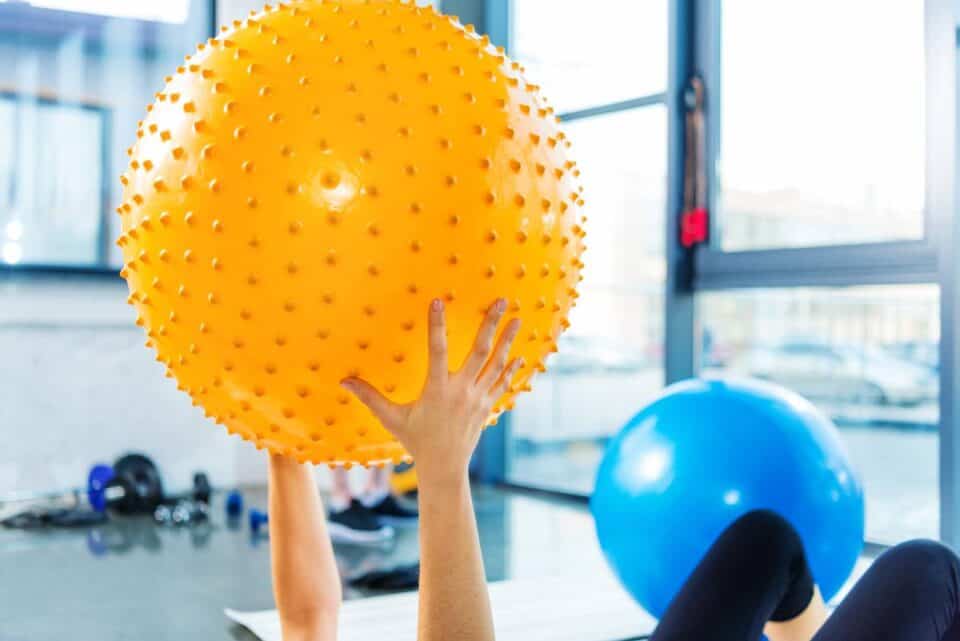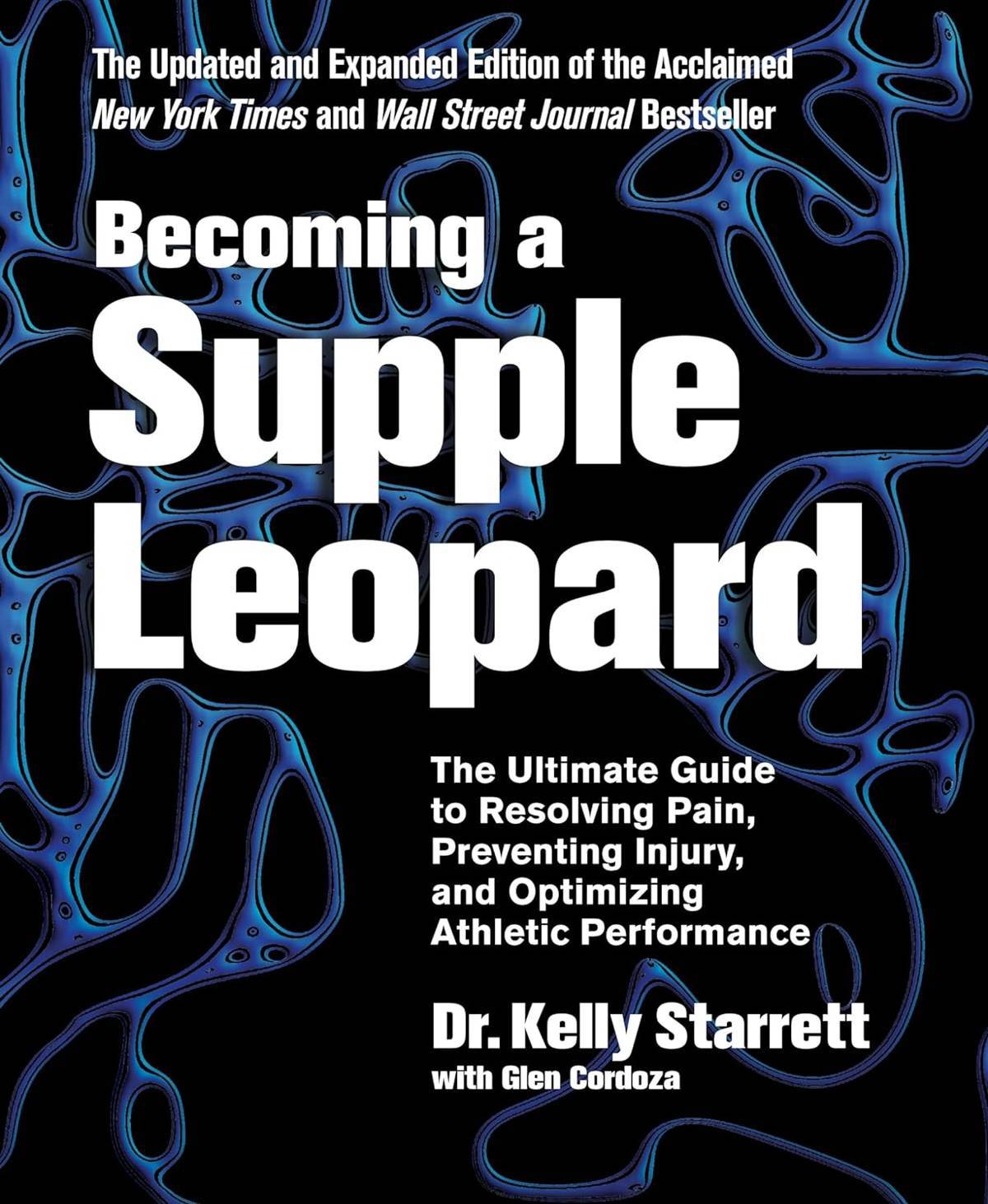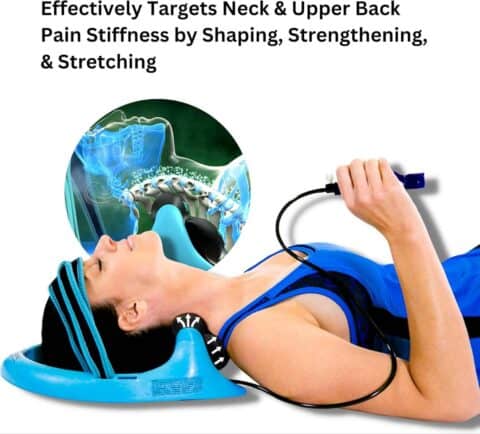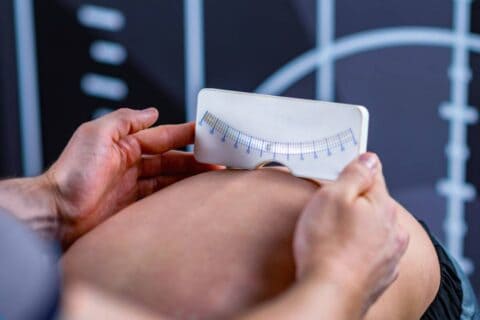Hey there! Dr. Tolj here, and I’ve got to tell you about this game-changing book I’ve been using with my patients. It’s called “Becoming a Supple Leopard 2nd Edition” by Dr. Kelly Starrett, and honestly, it’s been a total revelation in my practice.
Now, I know what you’re thinking – “Another health book? Really?” But trust me, this one’s different. I’ve been in this field for years, focusing mainly on chiropractic care, spinal decompression and neuropathy treatments, and I’ve never come across anything in detail about mobility like this book.
Table of Contents
- Why This Book Stands Out
- Key Concepts and Techniques
- Mobility Enhancements
- Banded Joint Distractions
- Myofascial Release Innovations
- Cutting-Edge Concepts
- Voodoo Floss Techniques
- Comprehensive Exercise Coverage
- Real-World Applications
- Advanced Concepts
- Implementing the Book’s Teachings
- Conclusion
Why This Book Stands Out
The second edition of “Becoming a Supple Leopard” builds upon the success of its predecessor, offering even more refined techniques and easier-to-follow instructions. Starrett’s philosophy goes beyond simple stretching or exercise routines. He provides a blueprint for understanding and improving human movement as a whole.
This approach allows readers to move safely and efficiently in all situations, organize their spine and joints in optimal, stable positions, and restore normal function to joints and tissues. The book doesn’t just present theory; it offers concrete, step-by-step guidance on how to apply these principles to real-life movements.
Key Concepts and Techniques
You know, when I first dove into Starrett’s approach, it really opened my eyes to how we think about movement. He’s not just talking about lifting weights or doing yoga – he’s getting at the core of how our bodies are designed to function.
Foundations of Movement
Starrett’s big on what he calls “midline stabilization.” It’s all about keeping your core engaged and your spine in a neutral position. Think about it – whether you’re picking up a heavy box or just sitting at your desk, that stable core is crucial.
He also talks a lot about creating torque in your movements. It’s not just about moving through space, but about generating force from the ground up. This concept was a game-changer for me in understanding athletic performance.
Fundamental Patterns
Let’s chat about two exercises that Starrett considers fundamental: the air squat and the deadlift.
Air Squat Mastery
Now, don’t roll your eyes at the air squat! It might seem basic, but Starrett uses it as a diagnostic tool, and it’s brilliant. When I watch a client do an air squat, I’m looking at:
- How their feet are positioned. Are they turned out too much? Not enough?
- Where their knees are tracking. Are they caving in?
- How they’re hinging at the hips. Is there a good fold there, or are they bending mostly at the knees?
- The position of their spine. Are they maintaining that neutral position we talked about?
It’s amazing how much you can learn about someone’s mobility and movement patterns just from this one exercise.
Deadlift Dynamics
Now, I know the deadlift scares a lot of people. They hear “deadlift” and think “back pain.” But when done right, it can actually be therapeutic and its a natural human body movement. Think about how many times you actually hinge during the day doing regular things around the house. The key elements here are:
- Nailing that hip hinge. It’s all about pushing your butt back, not just bending over.
- Keeping the spine neutral. No rounding!
- Experimenting with different grip variations. Some people do better with a mixed grip, others with a hook grip.
- Syncing your breath with the movement. This ties back to that midline stabilization we talked about.
I’ve had patients with chronic back pain find relief through proper deadlifting. It’s all about the technique.
Mobility Enhancements
Starrett’s not just about the big movements. He’s got some fantastic mobility work too.
The Couch Stretch Revolution
This stretch is a killer but in a good way. It targets areas that get super tight in our sedentary world:
- The psoas and iliacus. These hip flexors get shortened from all our sitting and can cause neurological pains.
- The rectus femoris. That’s part of your quad, and it often gets neglected in stretching routines.
- Even the abdominal fascia gets some attention here.
I often modify this for my patients. Not everyone can jump right into the full version, but even gentler variations can make a big difference.
Banded Joint Distractions
This is where things get interesting. Using bands to create space in joints can lead to some dramatic improvements in mobility. We’re talking about:
- Shoulder mobility. Great for anyone with overhead movement issues.
- Hip capsule release. This can be a game-changer for squat depth.
- Ankle dorsiflexion. Crucial for so many movements, from walking to squatting.
These techniques work really well in combination with hands-on therapy. The bandwork can help maintain the improvements we make in manual treatment.
There’s so much more we could dig into, but these are some of the key points that I’ve found most impactful in my practice. What parts are you most interested in? Or do you have any specific movement issues you’re dealing with? I’d be happy to go deeper on any of these topics or explore how they might apply to your situation session protocols, you can book with me today.
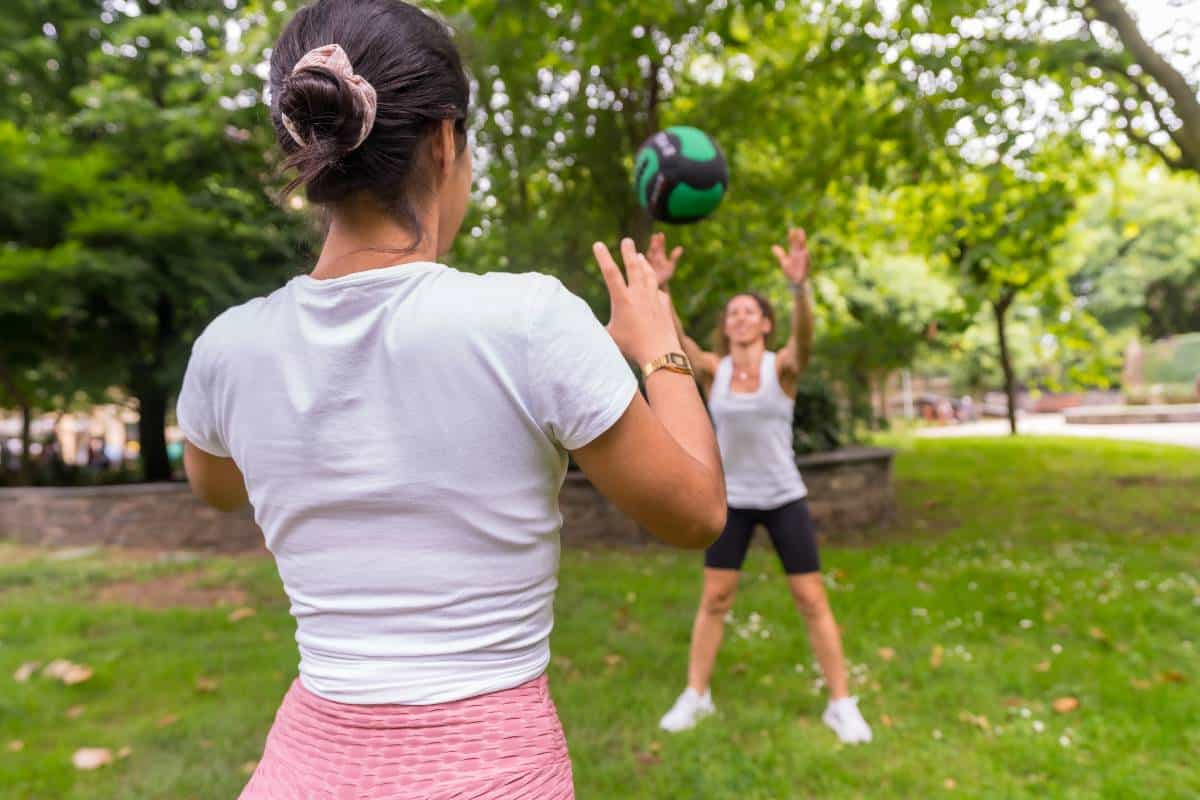
Myofascial Release Innovations
Let’s talk about some of the cool self-care techniques Starrett introduces. These are game-changers for helping patients maintain progress between sessions.
Precision Ball Work
You know those lacrosse balls you see lying around in every gym? Starrett turns them into powerful tools for myofascial release. Here’s how:
- For gluteal tension relief, he’s got this method where you sit on the ball and do some specific movements. It’s like giving yourself a deep tissue massage. I’ve had patients who swear by this for sciatica symptoms.
- Thoracic spine mobilization is another big one. You lie on the ball and let it press into those tight spots between your shoulder blades. It’s amazing for desk workers who struggle with upper back pain.
- And don’t get me started on the plantar fascia release. If you’ve ever had foot pain, this technique can be a lifesaver. You roll the ball under your foot, and it’s like… well, it hurts so good, you know?
These methods are great because they give patients tools to work on their issues at home. It’s all about empowering people to take charge of their own health.
Cutting-Edge Concepts
Starrett’s always pushing the envelope. Some of his advanced techniques are pretty intense, but the results can be incredible.
The Super Couch Challenge
This one’s not for the faint of heart. It’s an advanced version of the couch stretch we talked about earlier, and let me tell you, it’s intense.
- For elite athletes, this can be the key to unlocking that extra bit of hip mobility that makes all the difference in performance. I’ve seen sprinters shave time off their runs after mastering this.
- It’s also shown some promising results for people with stubborn lower back issues. By really opening up the hips and quads, it can take a lot of pressure off the lumbar spine.
But here’s the thing – you’ve got to be careful with this one. It’s not something I’d recommend without proper instruction and a good foundation of mobility work.
Voodoo Floss Techniques
Now this is a fascinating one. Voodoo flossing involves wrapping a joint or muscle group tightly with a special band. It sounds a bit out there, but the results can be pretty remarkable:
- For joint discomfort, it can provide almost immediate relief in some cases. I’ve seen people with chronic knee pain get up and move more freely after just one session.
- It’s great for improving the range of motion. The theory is that the compression forces fluids out of the area, and when you release the band, fresh blood floods back in.
- We’ve even seen some interesting results with certain neuropathy cases. The theory is that it might help stimulate nerve endings.
As with any new technique, we’re still learning about all the applications, but the early results are promising.
Synergy with Clinical Treatments
One of the things I love about Starrett’s approach is how well it meshes with other clinical treatments. It’s not about replacing other therapies, but enhancing them:
- His spinal strategies? They’re fantastic for boosting the effects of decompression therapy. Patients who combine the two often see faster and longer-lasting results.
- The mobility work he advocates really complements our circulatory treatments for neuropathy. By improving overall movement, we’re seeing better outcomes in terms of nerve health.
- And of course, all of his emphasis on proper movement patterns ties directly into injury prevention. It’s not just about treating existing issues but stopping new ones from developing.
By weaving these techniques into our personalized treatment plans, we’re able to offer a more comprehensive approach to care. It’s about looking at the body as a whole system, not just treating isolated symptoms to optimize results. Whether you’re managing chronic pain, exploring alternatives to surgery, or addressing neuropathy, these tools offer additional pathways to improved function and comfort.
Comprehensive Exercise Coverage
With hundreds of step-by-step photos, the book thoroughly covers a wide range of exercises, including squats, deadlifts, pushups, kettlebell swings, cleans, snatches, and muscle-ups. More importantly, it shows you how to correct common faults associated with these movements, which is crucial for preventing injuries and optimizing performance.
Mobility Techniques
One of the most valuable aspects of this book is its approach to addressing individual needs. Starrett breaks down the body into 14 distinct areas and demonstrates hundreds of mobilization techniques. This allows readers to resolve a specific range of motion restrictions, address nagging injuries, correct exercise faults, and create personalized mobility prescriptions.
Real-World Applications
Athletic Performance Enhancement
As someone who has worked with athletes of all levels, I can attest to the importance of proper recovery and injury prevention. This book offers invaluable insights on accelerating recovery after training sessions and competition, preventing common athletic injuries, and treating and resolving issues like low back pain, carpal tunnel, shoulder pain, and tennis elbow.
Daily Life Improvements
It’s not just for athletes – everyday people benefit too. Many of my patients have found relief from chronic issues, improved their posture, and reduced pain from sedentary jobs. The techniques in this book can lead to improved functional movement for daily tasks and increased overall well-being and quality of life.
Advanced Concepts
For those ready to take their mobility work to the next level, Starrett introduces more advanced concepts like the “super couch” mobilization. While these techniques can be intense, they’ve proven incredibly effective for athletes looking to push their limits. The book’s effectiveness is evidenced by its adoption by world-class athletes.
Implementing the Book’s Teachings
To get the most out of “Becoming a Supple Leopard,” I recommend starting with the basics and gradually progressing to more advanced techniques. The 14-day full-body mobility overhaul provided in the book is an excellent starting point for many. Consistency is key – even short daily sessions can lead to significant improvements over time.
Conclusion
“Becoming a Supple Leopard 2nd Edition” is more than just a book – it’s a comprehensive guide to understanding and optimizing your body’s movement. Whether you’re an elite athlete, a fitness enthusiast, or someone dealing with chronic pain, this book offers invaluable insights and practical techniques to help you move better, feel better, and perform at your best.
In my practice, I’ve seen remarkable results when patients implement the strategies from this book. From improved athletic performance to reduced chronic pain, the impact of Starrett’s methods is undeniable. It’s a resource I return to time and time again, and one I wholeheartedly recommend to anyone looking to take control of their physical well-being.
Remember, the journey to becoming a ‘supple leopard’ is ongoing. Be patient with your body, and consistent in your practice, and you’ll likely see remarkable improvements in how you move and feel. This book provides the roadmap – it’s up to you to take the journey.
Blog Disclaimer: The information provided on The BodyFix Chiro blog is for general informational and educational purposes only and is not intended as medical advice. These articles reflect our opinions and experiences but should not be used to diagnose or treat any health conditions. Always consult with your physician, chiropractor, or other qualified healthcare provider before starting any new treatment, exercise program, or making changes to your health routine. Any actions you take based on information from this blog are entirely at your own risk, and The BodyFix Chiro and its contributors disclaim any liability for the decisions you make based on this information.

